Concrete Slabs and Runners Are Notorious for Failures
Solution?
Gravel Pad With FoundationWorks System vs Concrete Slab or Runners
The FoundationWorks system is designed and engineered for a gravel pad, allowing for seismic absorption & lateral friction. Also, this system provides other benefits like increasing the weight displacement. I will expand more about these awesome advantages below. However, they are why I prefer a gravel pad to a concrete slab.
Load Bearing Path Through 6″ Concrete Slab
Let me explain what a load bearing path means. A load bearing path from the home is on a 45-degree angle through a concrete slab so the effective footing area of a 6″ slab under each pier is approximately 18″ x 18″. Meaning, the entire slab does not provide additional footing or load bearing for the home (see any blocking diagrams in all factory set-up manuals).
FoundationWorks PSC’s Provide Stronger Load Bearing Path
The load path for the FoundationWorks stanchions or PSC’s is about 12 degrees to grade with approximately 6.3 square feet of effective footing area per stanchion, which substantially increases the total footing area and weight displacement for the home compared to a typical setup on a concrete slab.
Building A Gravel Pad for FoundationWorks PSC’s
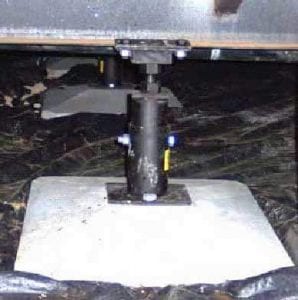
FoundationWorks System is considered a E.R.B.S. Earthquake Resistant Bracing System.
- Start with excavating and removing the organic layer of soil down to load bearing soil. Remember, it is all about pounds per square foot over the bearing soil. Therefore, the more effective footing area over the bearing soil the better (think logger boots vs. high heel shoes).
Think Logger Boots vs. High Heel Shoes
Consider A Typical 27′ x 66′ Manufactured Home
- Assuming this jurisdiction considers bearing soil to have a value of 1500 pounds per square foot. Then, the standard blocking (CMU block piers) will be supporting about 180 square feet of footing.
- Adding the FoundationWorks system to the equation, you get an additional 100 square feet of footing capacity from their installation. Thus, your pounds per square foot capacity for the home itself (dead load) on the home pad will be around 270 to 300 PSF. Finally, leaving you plenty of room for added snow load and live load (meaning you and your stuff).
- At last doing the math. Your home will weigh about 80,000 pounds, so dividing by 280 square feet of footing is about 285 psf. (Total footing area – Blocking and FoundationWorks System).
Comparing Gravel Pad w/ FoundationWorks vs Concrete Slab
Concrete Slab
If a concrete slab cracks and settles, there is no adjustment or easy remedy to fix that. Additionally, because the soil under a slab tends to be moist and significantly cooler than on top of the slab, and a jurisdiction most likely will not allow expansion joints in a foundation mono slab, there is a better than even chance that the slab will crack. If you choose to do a slab, be sure to excavate to bearing soil and then install and compact structural fill with a crushed gravel cap (5/8″ minus) in not more than 6″ lifts with 95% compaction. Testing is simple.
A hand penetrometer can be used to determine compaction. If the jurisdiction requires compaction certification, you can use a lab such as Geo-test Inc. to come out and shoot it. if you end up filling more than 12″, the jurisdiction may want a compaction test by a lab. The lab will want a “proctor” (test for moisture and density) of your fill material, so just have a 5-gallon bucket of it available for them. Sometimes, a gravel pit will have proctor info on hand for their material.
FoundationWorks Stanchions PSC’s On Compacted Gravel
The FoundationWorks stanchions or PSC’s are adjustable. The greatest reason for using this system is that most jurisdictions will require compaction testing. Therefore, building a road under your home makes the most sense. Especially if you have witnessed like I have slab after slab failing because they lacked compaction under the slab. This costs homeowners thousands of dollars in future repair costs. Many times more that the home itself.
Factory Setup Manuals
The factory set up manual and the jurisdiction will require a 6-mil black poly vapor barrier over the slab, and that somewhat negates the ability to roll on a creeper under the home. A home set on a compacted gravel pad is also required to have the same poly vapor barrier over the pad. Under the home is never a fun place to be, but I would say that crawling on visqueen over a concrete slab or crawling on poly over a compacted gravel pad is similar on the fun meter.
Pit-Set (Home Set Down Into Ground)
In some jurisdiction, your home will be pit set with the top of pad about 18″ below the surrounding grade to prevent frost intrusion (heaving). Concrete slabs have a propensity for wicking moisture from the ground beneath the slab that can accumulate on top of the slab and under the vapor barrier – sometimes causing puddling. While, gravel pads dissipate or shed water and are tied into outside drainage.
PSC stanchions have enough vertical load capacity to hold the entire home even if the intermittent CMU block piers all cracked and failed during an earthquake.
Superior Earthquake Resistance
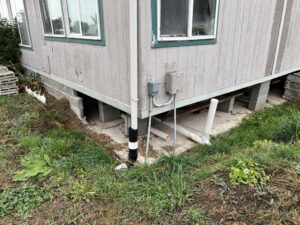
Slabs commonly crack due to builders placing them on uncompact soils, costing thousands $$$ in repairs.
Fact, seismic energy (earthquake) impacts rigid structures following the structural supporting and framing members of the home. I liken it to electricity traveling through a wire. Thus, strapping a home to a solid concrete slab with tie-downs is extremely rigid. Therefore, there is very little energy absorption or flexibility.
The FoundationWorks Differences
Best of all, The FoundationWorks stanchions have a positive connection to the frame (bolted clamp) and fastened independently. Especially too with their attached (bolted) reinforced footings, allowing some movement and individual energy absorption during an earthquake. Also, the 16 FoundationWorks stanchions required for this home have enough vertical load capacity to hold the entire home. Surprisingly, even if the intermittent CMU block piers all crack and fail during an earthquake you will be safe.
Where To Buy?
You can purchase the FoundationWorks System from YOUR COMPANY HERE. Either call 360-333-5498 or go to YOUR WEBSITE HERE
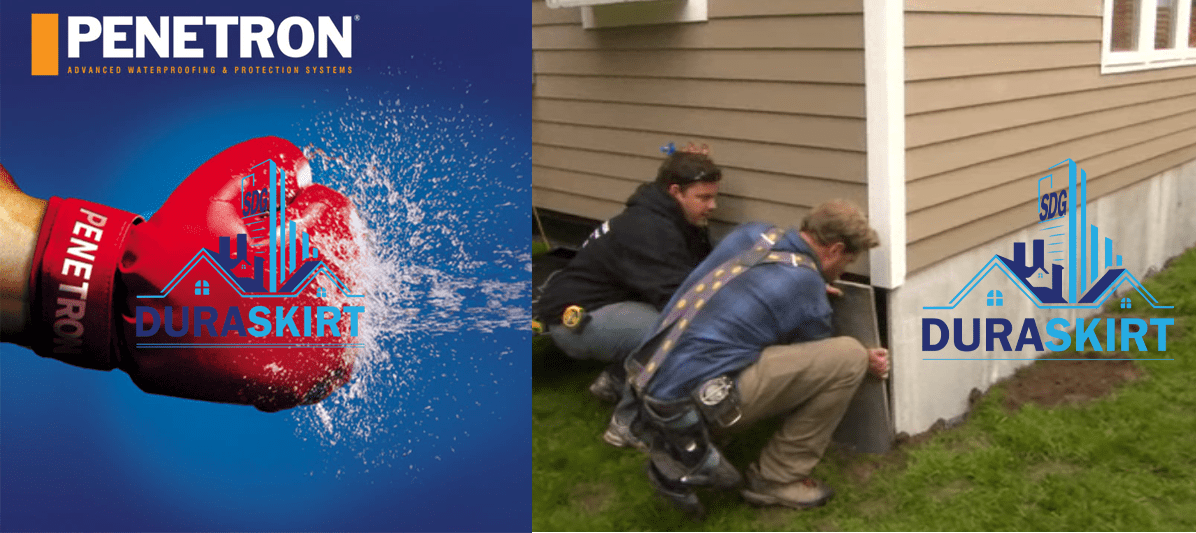
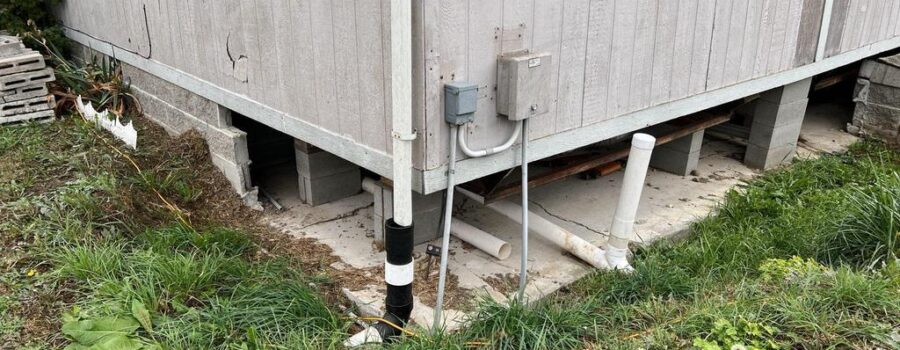
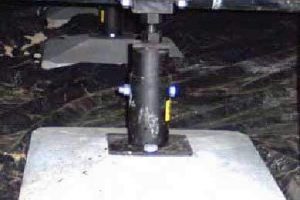
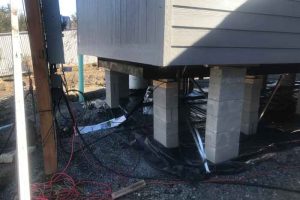
Leave a Reply